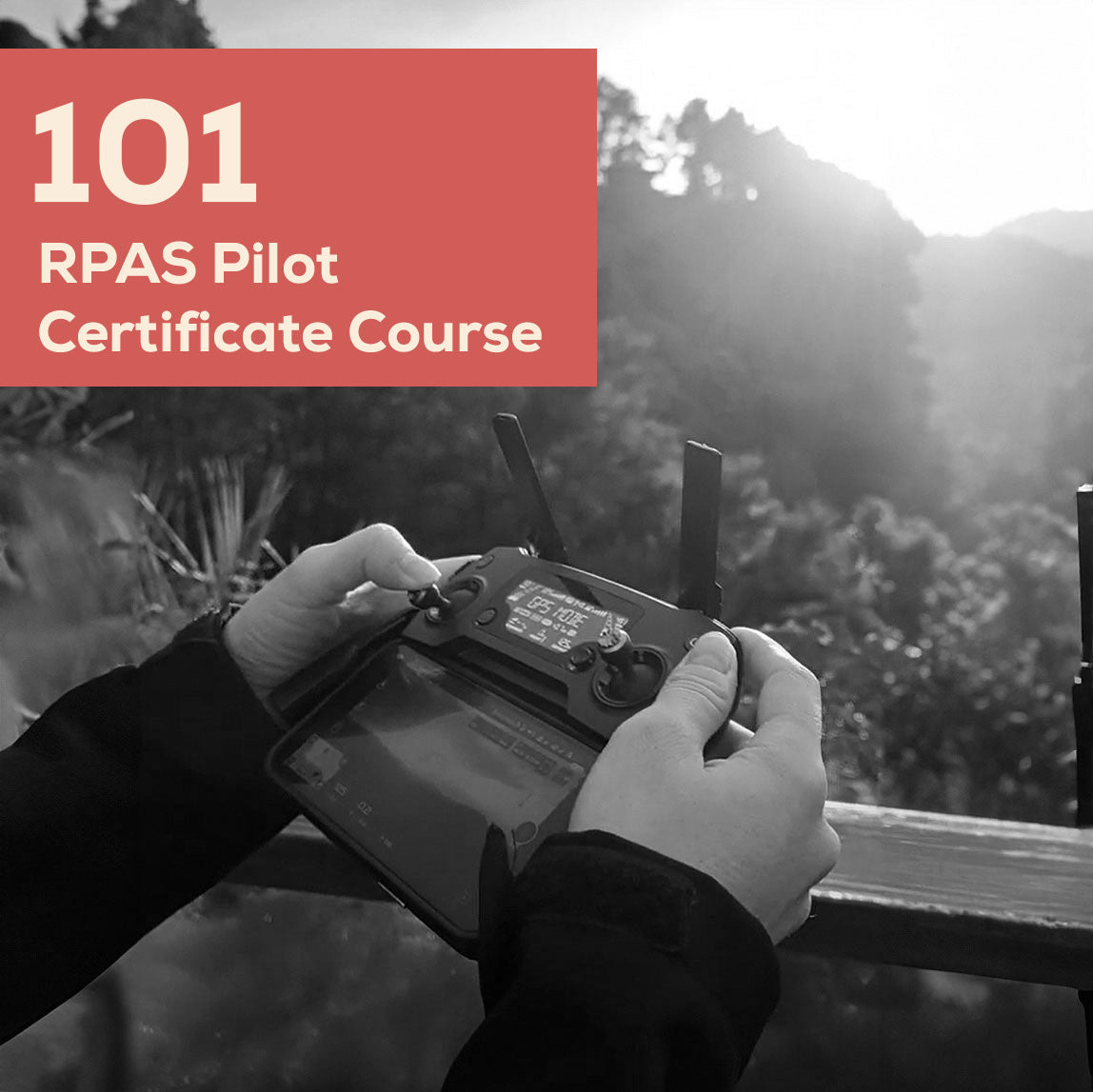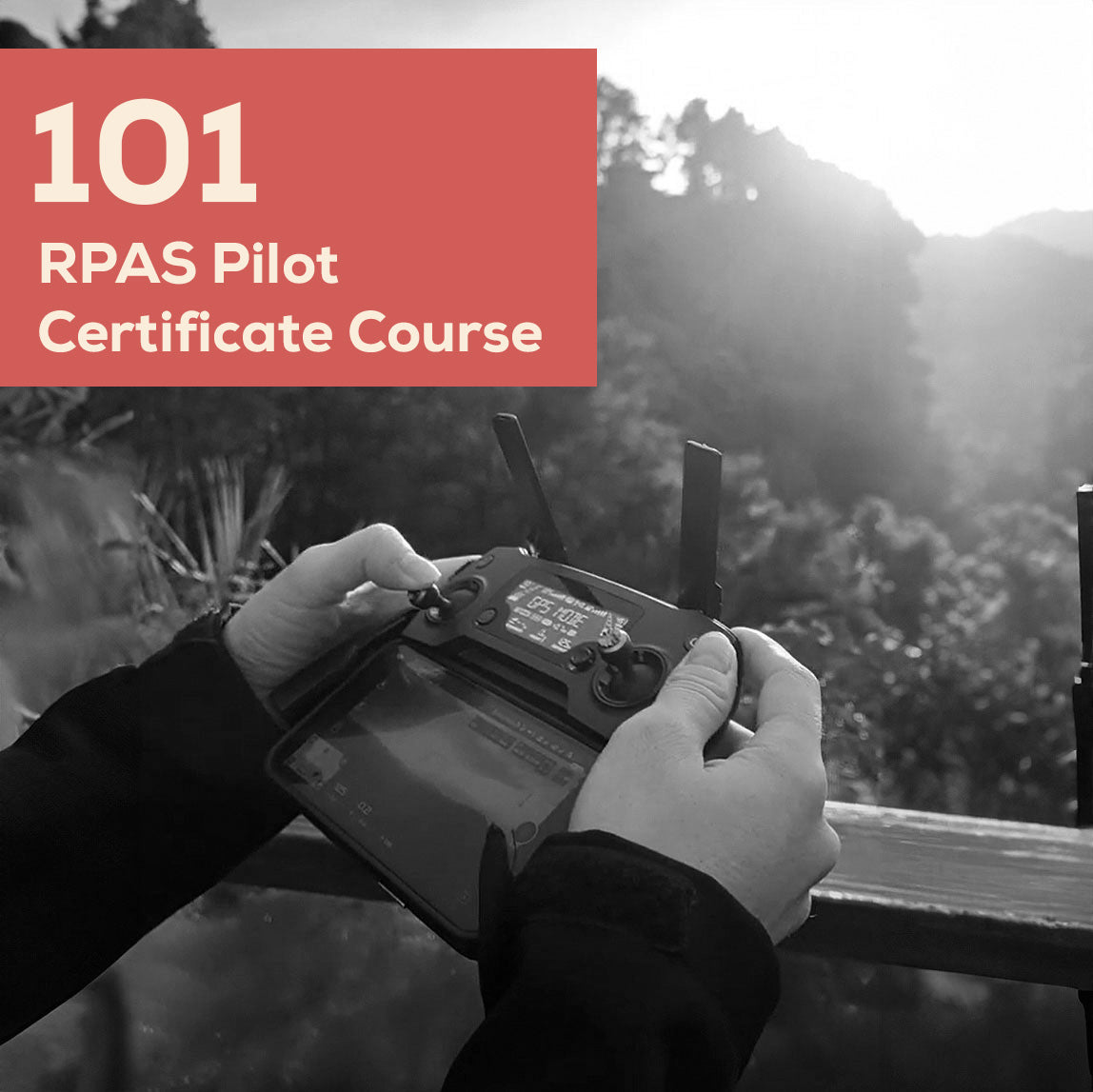Part 101 Pilot Certificate Course
Part 101 Pilot Certificate Course
Couldn't load pickup availability
Learn the Part 101 rules to fly close to an airport as a Drone Trust 101 Certified Pilot. This CAA-certified course is provided by Flight Test NZ Part 141 certificate TR52489. The practical flight test requires a drone that can manually select ATTI/Rate mode (info below)
View full details
Is this the right certification for me?
So long as you are complying with the following conditions, you are not required to have any qualification, although it is recommended to attain a Part 101 Certification to ensure you are familiar with the relevant aviation laws and rules, and it will also allow you to fly with 4km of an airport.
- Not operating in the hours of darkness (unless this is being carried out under a shielded operation)
- Not operating within 4 Kms of an airport/heliport (unless this is being carried out under a shielded operation)
- Not operating above 400 feet (120 meters) above ground level
- Not operating within a controlled airspace beyond the 4 km limit of airports
- Not flying over people without their permission
- Not flying over property without the permission of the landowner (incl roads and railways)
- Not applying liquid spray or pellets to pasture
- Not flying a drone with an unladen weight greater than 25 Kgs
Course Details
This course consists of a mix of reading and watching short videos. Throughout the course, there are short quizzes. These will help you to be sure you have absorbed the information presented. You can go back and review the content at any time. You may repeat any quiz as many times as you’d like.
At the end of this course, you will be asked to take an exam covering all of the information presented. You must achieve a score of 80% or better to pass this exam. If you get less than 80% you may resit the exam.
Upon successful completion of the online theory portion of this course, you will have a good understanding of where you can legally and safely fly your drone. The next step is to complete your practical flight assessment. During the practical assessment the examiner will ask you oral questions on your knowledge of the rules as well as assessing your flying ability.
Module 10 will help you prepare for your practical flight assessment. If you would like to learn more about the flight assessment requirements watch our detailed Flight Assessment and ATTI Mode videos.
After you successfully complete your flight assessment you will receive your Recreational RPAS Pilot Certificate. With this qualification you are legally allowed to fly your drone within 4 km of an airport (providing you meet the other legal requirements, as your will learn about during this course.)
Please note that this course needs to be completed within 12 months. This includes all theory modules, final open book exam and practical flight test with one of our examiners. This is to ensure knowledge gained from the course is more easily recalled for the final practical flight test and oral questioning by the examiner. A candidate who exceeds this timeframe will need to recommence with the purchase of a new course.
Course Outline
Module 1: Introduction
In this module, we look at why you need to know the Part 101 rules, the requirements to obtain the Professional RPAS Pilot Certificate, and what additional drone operations are allowed with the certificate.
Module 2: Civil Aviation Rules
This covers the Civil Aviation Act (CAR) and the relevant parts required for drone operation.
Module 3: Understanding the Concept of Airspace
In this module, we will dive into the concept of airspace! Including its classifications and Visual Navigation Charts (VNCs).
Module 4: Measuring Drone Altitude
Within this module we look at the importance of AGL vs AMSL, and manned aircraft altitudes.
Module 5: Airspace Categories
In this module we look at controlled and uncontrolled airspace. The type of controlled airspace and how this impacts drone activities.
Module 6: Special Use Airspace
This covers VFR transit lanes and special use airspace.
Module: 7: Runways and Aerodrome Operations
Look at take off and landing areas, wind, and permissions.
Module 8: Using the Airshare Site
This module looks at the Airshare site, logging your flight plan, and council by-laws.
Module 9: Finding ATC Contact Information on the AIP site
Covers how to find Air Traffic Control and contacts.
Module 10: Currency and Flight Assessment
This covers the flight assessment requirements and the RPAS Recreational Pilot Certificate.
Part 101 Exam
Final exam for course. This requires a drone that is ATTI mode capable.

